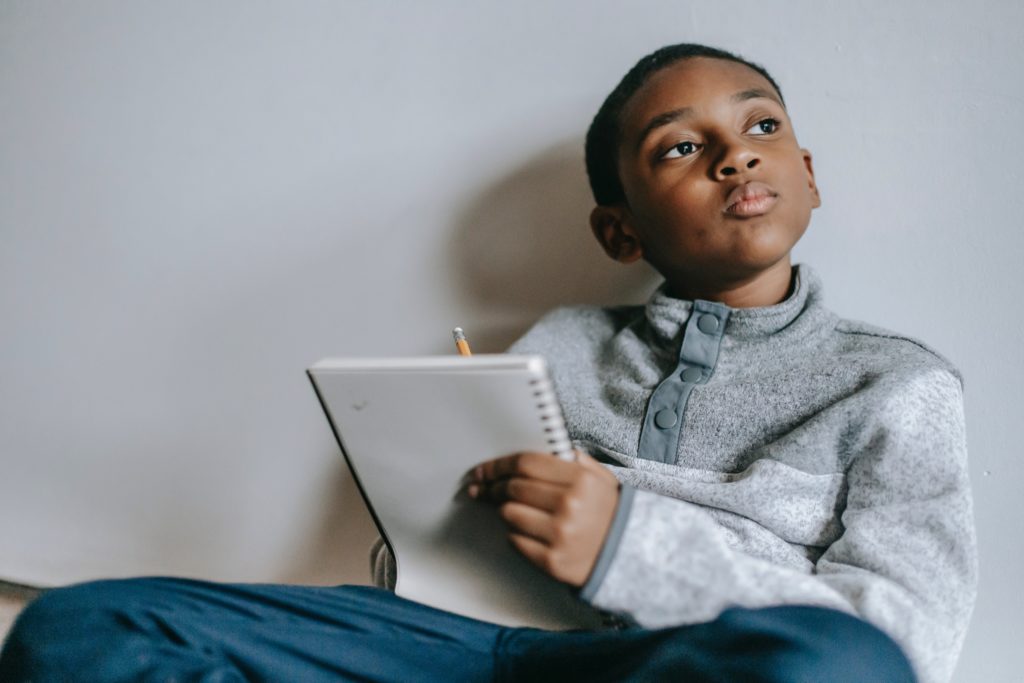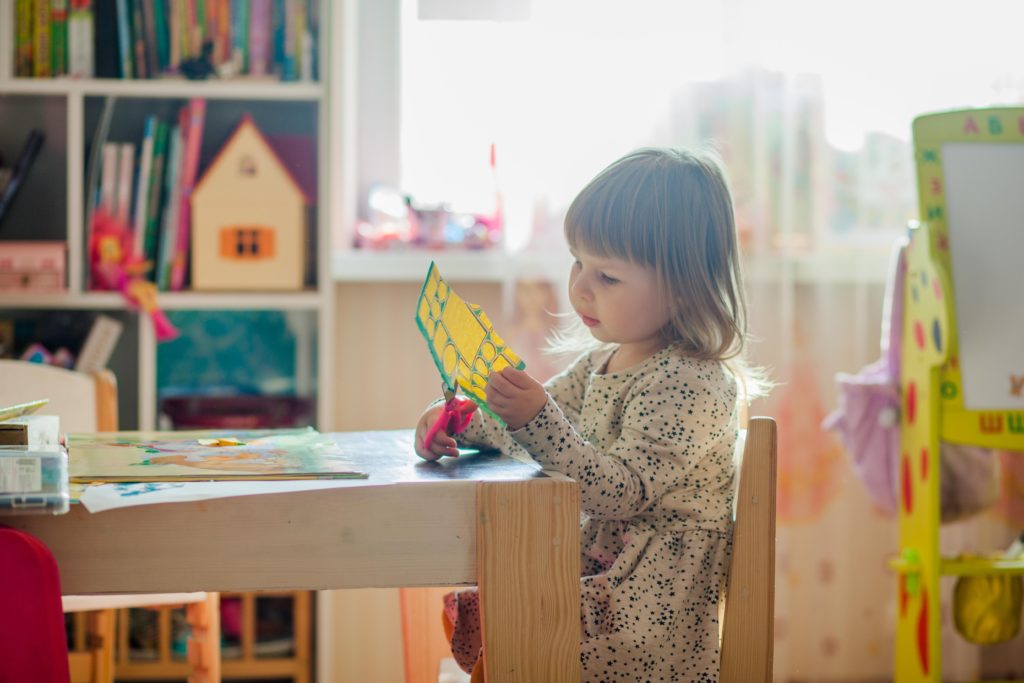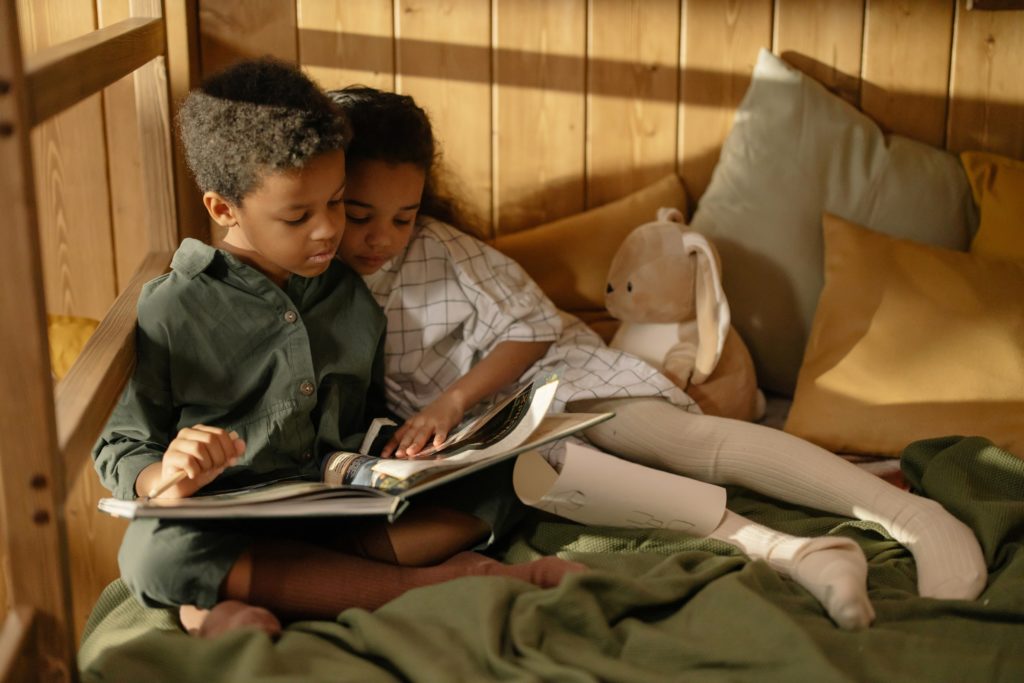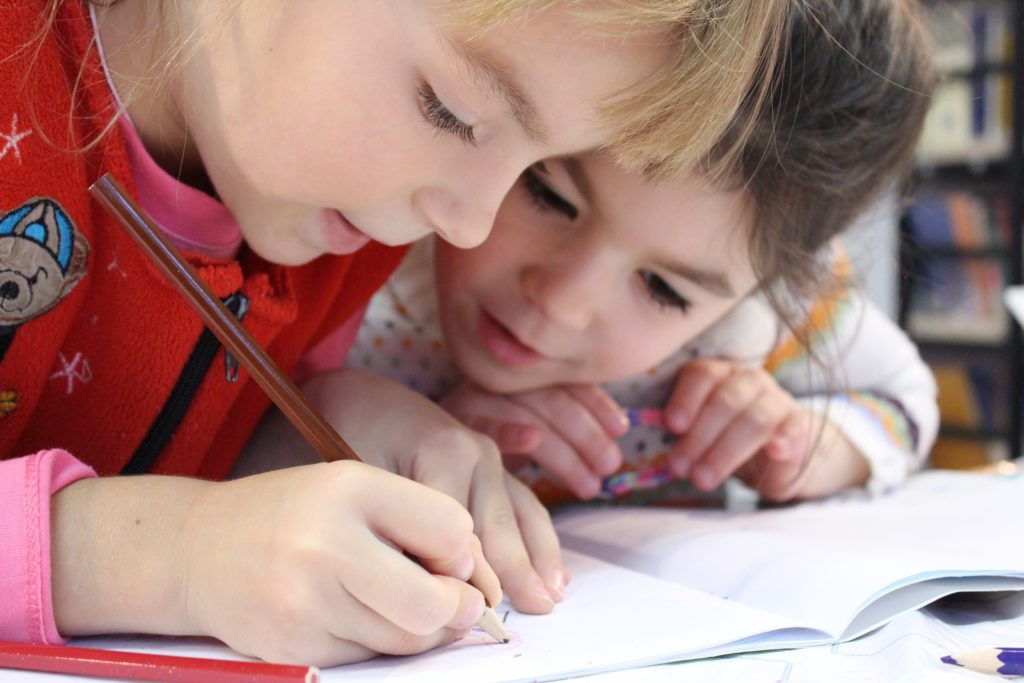Need budget-friendly ideas for homeschooling older elementary students? These resources are perfect for 3rd-5th grade students.
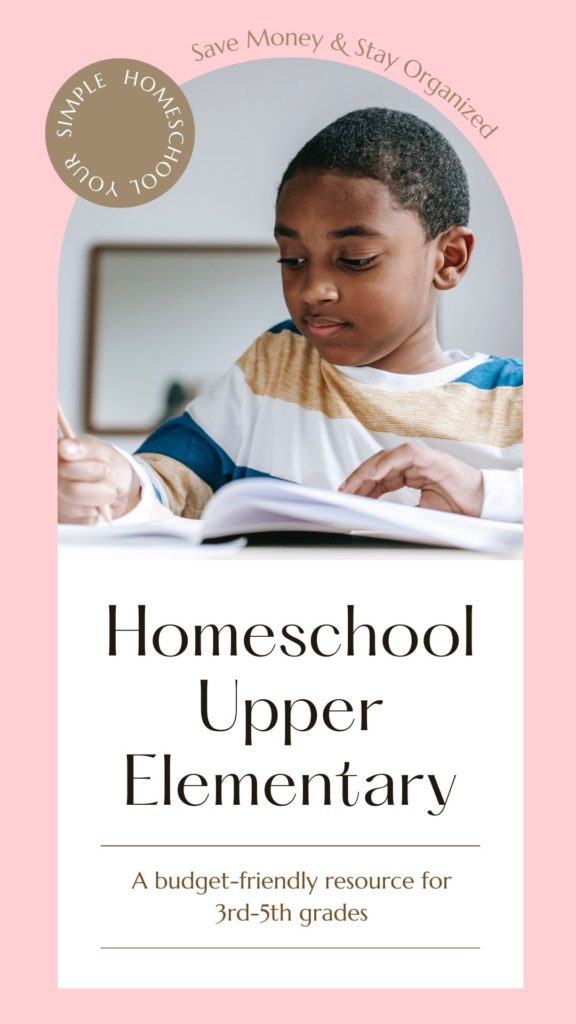
This post contains affiliate links. That means if you click on my link and buy something, I will earn a small commission from the advertiser at no additional cost to you. Read my disclosure policy here.
In our homeschool, the preschoool through early elementary grades are for learning through play. In our house, we have just a little bit of structure for younger kids, but their school stays very hands-on and fluid.
However, by 3rd grade, things change. This is when we start adding more structure and more traditional-looking school work to our routine. We focus more on Grammar, Science, History, Reading assignments, and some Writing. It’s still very play-driven and independent (they read fun books, build things, and fill in notebooks). I look over their assignments once a week and help them with any concepts they’re struggling with (sometimes YouTube helps us too – Thank God for YouTube.)
Here’s what we love for each subject!
Morning Time (for Early Elementary)
Because Morning Time is for all ages, I keep my expectations for Morning Time pretty chill. We read out loud and draw pictures and talk about things. There is a lot of interrupting, snack breaks, and repeating instructions. It’s life with kids.
Typically, after I read aloud, I’ll ask my upper elementary learners to create a “written narration” in their notebooks. This is a step above the Oral Narration they did in early elementary. Written Narration is a Charlotte Mason concept that is simply a retelling of what they remember from what we read. They put it in their notebook while the younger kids give an Oral Narration. I might require a few things in their narrations (like the date if we’re doing History), but it’s very fluid and can even involve drawings.
A lot of my kids’ written narrations are comic strips depicting the story we read from history. They’re absurd and exaggerated, but as long they demonstrate an understanding of the content, it works!
As they get older, we encourage our kids to follow the SMART Narration method (something I made up to try to encourage them to be creative with their narrations).
A SMART Narration is:
- Specific (share details you remember)
- Multiple sentences (5-10)
- Artistic (use colors or drawings)
- Rich language (use big words and creative descriptions)
- Try to make me laugh or say “Wow!”
During Morning Time, my kids also have a chance to practice any memory work the older kids are working on. Occasionally, we do a craft or watch a YouTube video that relates to what we’re learning.
During Morning Time, we typically do History, Grammar, Math Drills, Bible/Character, and Memory Work.
Learn more about Morning Time here!

Homeschool Math
- Life of Fred (makes math concepts very fun and entertaining – we use it to supplement our Math Curriculum and borrow them from the library)
- Math Lessons for a Living Education (a Charlotte Mason style math curriculum)
- Splash Learn (Online – free Math games!)
- Kahn Academy has great concept tutorials and practice problems and it’s free!
- Easy Peasy Homeschool has free resources as well!
Reading
For reading, we like to read a combination of just-for-fun books and educational stories that teach about a different time periods or worldviews. These are some of our favorite just-for-fun books. For the more, see History, Geography, and Social Studies.
Sometimes the kids read these books on their own, and sometimes we read them together during Morning Time.
To keep our book collection budget-friendly, we get nearly all of our books from the library, using a combination of physical books, cross-library borrowing, and Library Apps. We also shop at used book stores and thirft stores for books (and other educational games and toys!). Don’t forget Christmas and birthday lists for grandparents and other friends and family!
Classic Stories
Note: Some of these classic books contain parts that are problematic. We use them to start discussions with our kids about difficult issues in the past, how they affect our present, and how we must actively work toward healing and dignity for every human.
- The Boxcar Children (series)
- The Hardy Boys (series)
- Nancy Drew Mysteries (series)
- The American Girl Doll books (series)
- Raggedy Ann & Andy Stories (3-book series)
- Roald Dahl books
- Winnie-the-Pooh books (series)
- The Chronicles of Narnia (series)
- My Side of the Mountain
- Caddie Woodlawn
- Little House of the Prairie (series)
- Mrs. Piggle Wiggle (series)
- Dr. Dolittle (series)
- Great Illustrated Classics (abridged, engaging versions of classic stories!)
Modern Stories
- The Magic Treehouse (series)
- Star Wars: Jedi Academy (series)
- How to Train Your Dragon (series)
- Geronimo Stilton (series)
- The Boy who Harnessed the Wind
- The Last Kids on Earth (series)
- Mighty Jack (series) (graphic novel for middle grades full of positive elements – we loved it!)
- Encyclopedia Brown (series)
- Cul-de-Sac Kids (series)
- Zita the Space Girl (series)
- Harry Potter (series) (we let our kids read books 1-3 before middle school)
- The Prince Warriors (series)
Check out this list for fun, diverse themes in middle grade books!
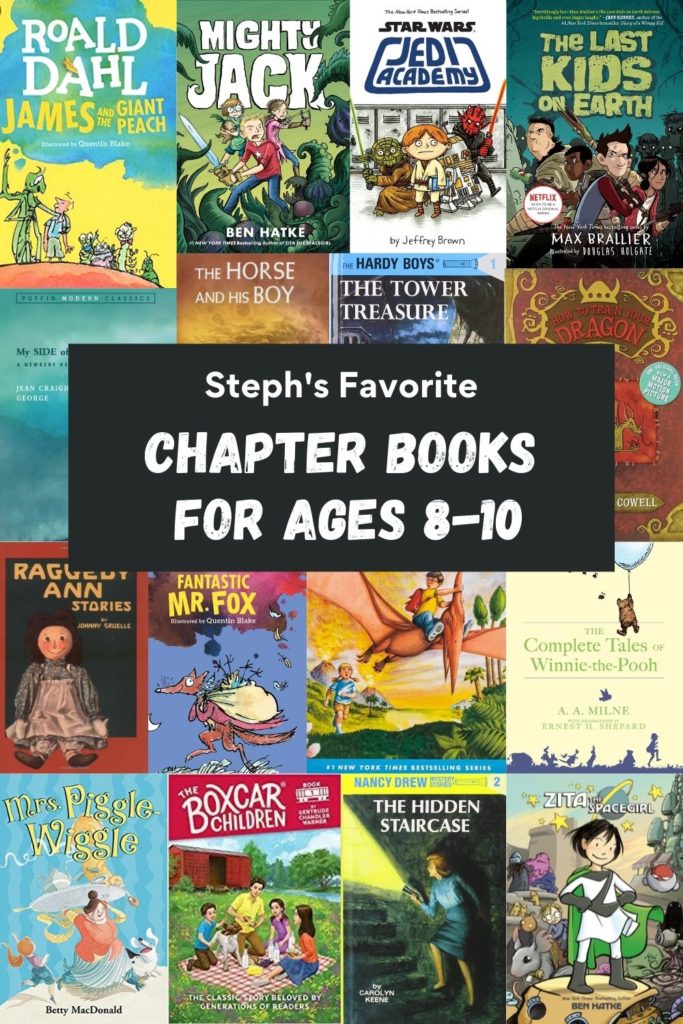
Writing
For writing in grades 3-5, we focus on handwriting, basic grammar, and simply practicing writing several paragraphs without hyperventilating (if you’ve ever asked an 8 year-old boy to write 5 sentences, you know what I mean).
A combination of workbooks, copywork (copying sentences and words from books and poems), and Written Narration provide the bulk of our writing practice. Sometimes, when they finish a chapter book for History or Reading, I have them complete a Written Narration.
- Workbooks (like Brain Quest!)
- A Visual Guide to Grammar & Punctuation
- Growth Mindset Journal (Journal/Writing) (geared towards older kids)
- Me: A Compendium (Journal/Writing)
- Spelling Power (Spelling)
- Channie’s Quick & Neat Writing Pad, Practice Handwriting & Printing Workbook (game-changer for handwriting!)
- Writing prompts
Character/Bible
Typically, we do this during Morning Time. We use a variety of books and resources, but these are good stand-bys.
- Growth Mindset Journal (Journal/Writing)
- Mr. Phil Show
- The Action Bible
- What’s in the Bible
- Read Psalms or Proverbs out loud while the kids draw pictures about what we’re reading.
Currently, we are reading What God Is Like, copying down a paragraph each day, and discussing what we think God is like.
History
Currently, we are working our way through The Story of the World series, and we supplement with books from Give Your Child the World (great picture books for younger kids and novels for older ones about that time period and place in the world).
After we read a chapter or section from The Story of the World (or our supplemental books), the kids give either an Oral Narration (younger kids) or a Written Narration (which sometimes involves a comic strip and silly drawings). We can do this all together during Morning Time, or I can simply assign the reading and narration to my older kids to do independently.
If your kids are artsy, you can try making a lapbook or a project from The Big Book of Books!
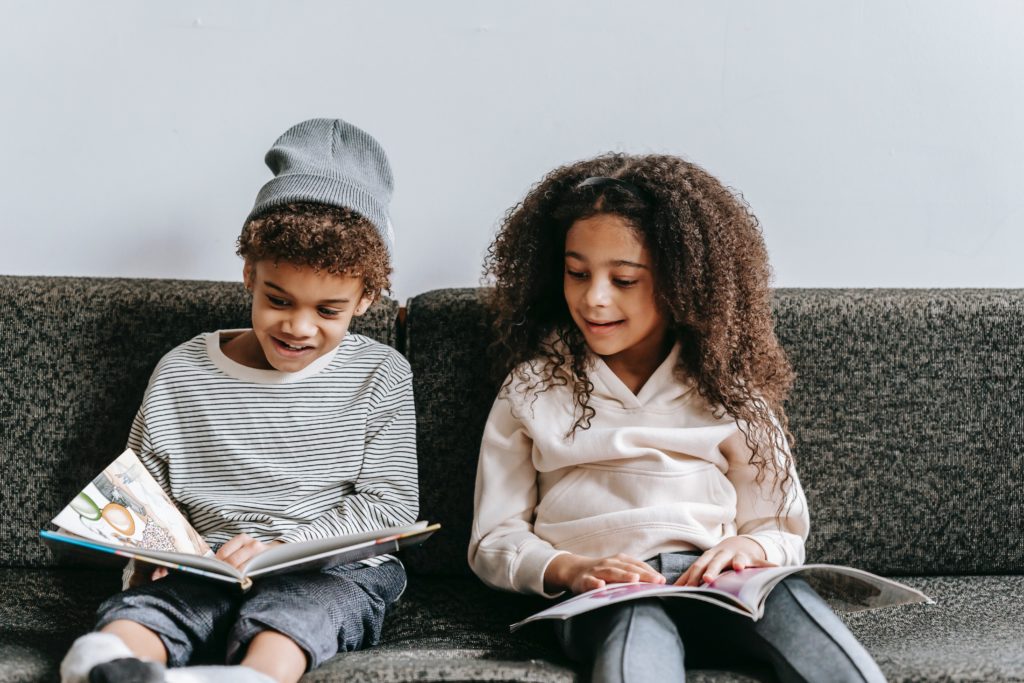
Geography/Social Studies
Before we started Story of the World, we worked our way through the continents using books from Give Your Child the World.
Give Your Child the World is an incredible, budget-friendly resource for books full of diversity, beautiful illustrations, and fun writing! We use the books in the lists to help us learn about History, Geography, and Social Studies. Most of the books are at the library.
We read several books from each place, cooked a food from that region (usually found in one of those books), watched a few YouTube videos about it, drew pictures about it, and compiled them in lapbooks for each continent. Chris and I traveled extensively before kids, and we had many friends who traveled, so we collected items from all over the world and created sensory bins for each continent. It was very free-flowing and play-based, but our goal was to widen our kids’ worldview and cultivate respect for different cultures.
- Give Your Child the World
- Written Narration
- Lapbooks
- The Big Book of Books
- DIY Continent Boxes
- Global Wonders (there’s a whole series! So good)
- Tour the World Song (YouTube)
- Learning games and printable unit studies (Science, Geography)
- Leapfrog Magic Adventures Globe (this was pricey but the kids loved it)
Science
Currently, we approach Science similarly to the way we approach History. We read a book or watch a show about a specific concept, and then we use Oral or Written Narration or hands-on projects to demonstrate what we learned. When our kids were younger, we used sensory bins, and honestly, the older kids still enjoy exploring them.
- Magic School Bus (TV series)
- National Geographic or Disney Nature Documentaries
- The Nature Connection Workbook
- A Kid’s Herb Book
- The library is great resource for Science books of all kinds
- Crash Course Kids (YouTube)
- Veritasium (YouTube)
- Written Narration
- Lapbooks
- The Big Book of Books
- Learning games and printable unit studies (Science, Geography)
- SmartLab Toys Squishy Human Body (Science)
Life Skills & Extra Curriculars
- Kids Cook Real Food (Get the best class for $7 here!)
- Typing Club (Online – free Typing!)
- Scratch (Online – free Programming and logic!)
- Code Master (Programming and logic)
- ABCYa (Online – free games for multiple subjects!)
- Signing Time (for learning ASL)
- WhistleFritz Spanish Immersion (for younger kids, but if they are just starting Spanish, the immersion is great!)
- Duolingo (free! But not always good for kids who are just going to click around for answers and won’t try to learn the language)
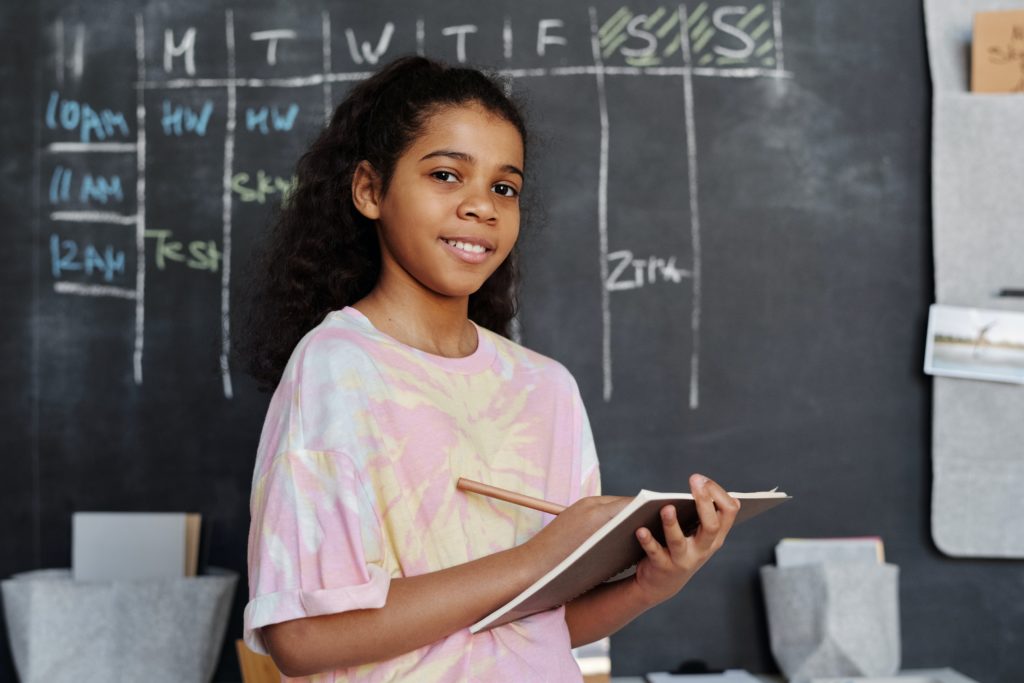
Online Homeschool Curriculum
These are fantastic free curriculum guides for homeschoolers.
As our kids hit grades 3-5, it’s important we start empowering them to create structure and develop skills that will help them in the future – like writing 5 sentences without freaking out (looking at you, 8-year-old boys), mastering math drills, and broadening their worldview. Every child is different, and every parent is different, so find what works for you and your kids!

